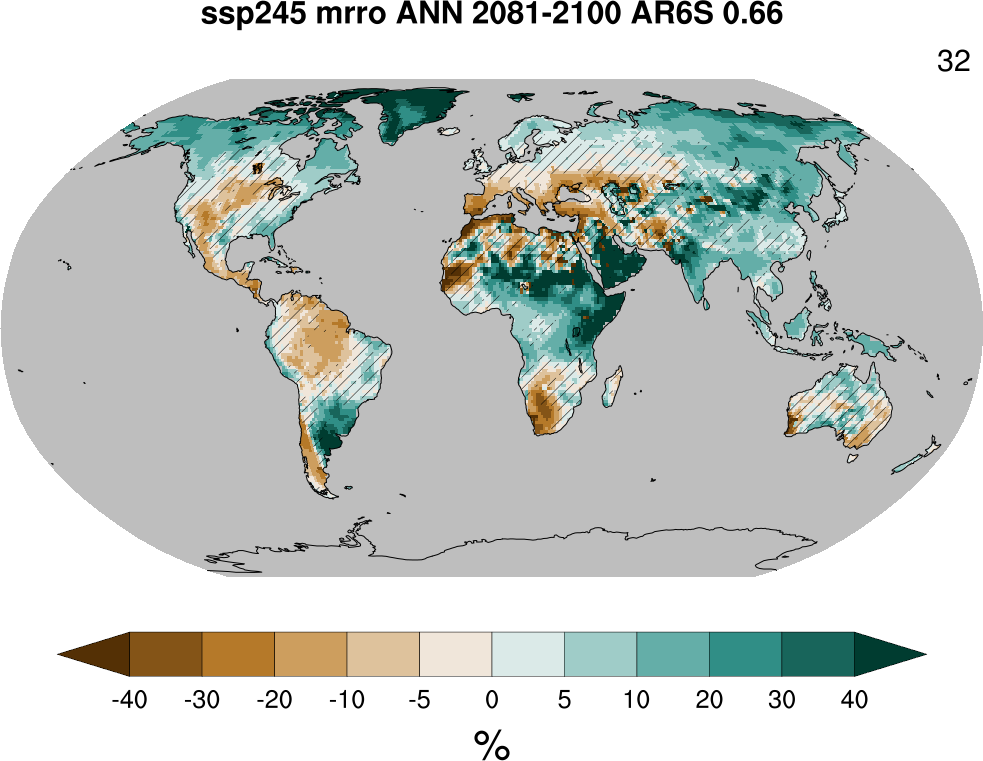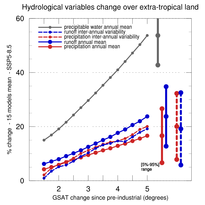Introduction¶
This is both the README page of CAMMAC GitHub repository, and the introduction page of the CAMMAC doc which can be reached on ReadTheDocs. However it doesn’t render fully on GitHub
CAMMAC is designed for analyzing climate variables change in a CMIP6 multi-model context, assuming that CMIP6 data is locally available.
It was originally developped and used for Météo-France’s contribution to IPCC Assessment Report #6 (AR6) WG1 Chapter 8 (that chapter deals with hydrological aspects of Climate Change). This is why it applies a ‘one model / one vote’ rule (but see One model / one vote)
The typical analyses allowed by CAMMAC are :
create multi-panel figures showing global maps of the multi-model change for some physical variables (or derived variables) between two periods (chosen in two CMIP6 experiments), or for a given global warming level. What varies between panels can be the projection experiment, or the variable, or the season… Various change definitions are implemented. The maps also include hatching and or stippling for representing confidence schemes according to AR5 or AR6 schemes

create plots of the dependance of relative change with warming level for some physical variable; the change is evaluated after averaging on basins or seasons, or even hybrid seasons (such as ‘global winter’, a composite of austral JJA and boreal DJF)

The workflow has three possible modes :
- launch batch jobs using e.g. one of the provided bash scripts (which is the easiest way) (see Batch execution of notebooks)
- interactively run one of the provided IPython notebooks (which provides more flexiblility)
- build your own Python program using the CAMMAClib library
The first mode, batch jobs, makes use of the notebooks quoted for the second mode; in both cases, one sets a number of parameters which allow to tune the processing.
For all three modes a data versions dictonnary is needed, as a basis for selecting the dataset to process (details here)
A few notebooks dealing with data availability, quality control and pre-processing are also provided and described here
While CAMMAC has been developped and used on IPSL’s ESPRI <https://en.aeris-data.fr/espri-2/>`_ platform, it is fully portable and usable on any machine with CMIP6 data and e.g. conda-enabled environments (see Sofware requirements)
The initial development was funded by Météo-France’s CNRM, and done by Stéphane Sénési